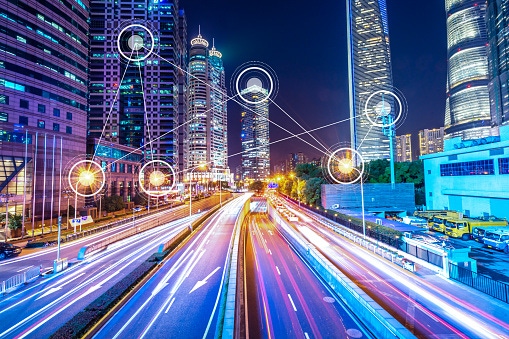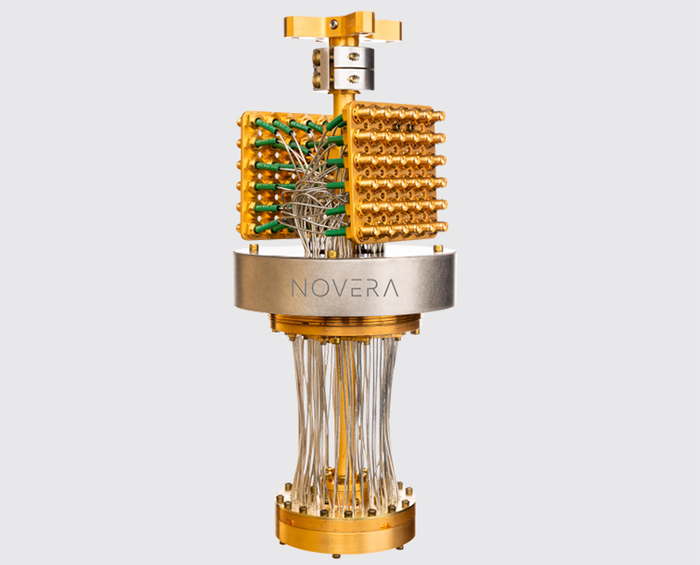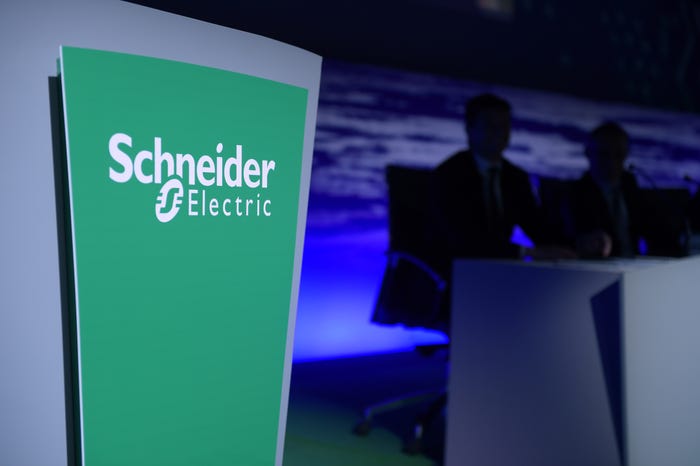From energy efficiency to data-powered insights, smart buildings continue to evolve becoming more than just a buzz phrase.
February 22, 2019

Internet of Things hype has inspired visions of hyper-connected smart homes, smart commercial buildings and smart cities that, pragmatically speaking, may still be a ways off. Although, progress is being made on all fronts, especially in the case of smart buildings, which are projected to grow at a rate of more than 19 percent between 2018 and 2024, according to Allied Market Research.
Many office buildings, corporate headquarters, factories and other structures used for business purposes have been progressing for many years along paths to use technology to make building operations more automated, efficient and precise. In doing so, they are making these buildings less expensive to run, as well as more comfortable and desirable for tenants. It is a movement that began decades ago when many energy management devices initially were upgraded to digital technology.
“The buzz term ‘smart buildings’ is starting to become more real,” said Dave Hopping, CEO of Siemens Building Technologies division – Americas. “The truth is that there have been various digital controls in place in many buildings since around 1979 or so. Those buildings have always been smart in some sense.”
As the decades passed, more integration among the various digital energy management systems in buildings enabled the creation of more automated and efficient building architectures. They were smart in the sense that they were easier to operate, but building operators were limited in their ability to draw insights from their systems that could help them save money, avoid energy waste, conduct proactive maintenance to avoid outages or configure their spaces and assets for optimal use by tenants.
“Buildings have been digitized, but only as closed environments,” said Kaynam Hedayat, vice president of product management at Schneider Electric.
What has been missing is the ability to collect data from these systems and conduct real-time analysis on that data to produce insights building managers could use to improve how effectively and reliably buildings operate.
That’s where IoT comes in as the latest wave of in this decades-long progression. In combination with new wireless broadband connectivity technology allowing for greater in-building coverage and cloud computing contributing analysis and intelligence, IoT can help make buildings smarter — or at least make building owners smarter about how to operate them.
It can also help them turn smart building operational architectures into launching pads for new applications and benefits.
“The next wave of smart buildings will rely on cloud computing and high-speed data enabled by 5G,” Hopping said. While it remains to be seen what the impact of 5G will be in the building market, the Internet of Things clearly offers a variety of promises for building managers. “The new part of this is building IoT into these environments, where you can now have sensing systems, and you can build new applications and create a whole traffic flow throughout that building,” Hopping added.
Getting Smart About Energy
Sleek visions of fully-optimized smart buildings may excite companies intent on helping building operators pursue smart building upgrades, but building owners and operators may be focused on more practical matters than pursuing innovation for the sake of claiming early-mover status.
“A lot of times building developers and operators know the problems they are facing, but not the solutions,” said Shailesh Topiwala, director of business development, buildings and smart communities for Bosch in North America. “They may have some awareness of the technologies that can be applied, but we may have different viewpoints to offer them about how to use these technologies to address their use cases.”
For example, some of the biggest pain points for the operator of almost any size building are likely to revolve around the energy costs, the cost of maintenance of energy systems and the lack of control over energy waste. According to the U.S. federal government’s Energy Star program, commercial and industrial buildings account for almost half of all U.S. energy consumption, and almost half of all greenhouse gas emissions.
A recent Deloitte Consulting Insights article stated, “Optimizing and improving the operations of the facility can lead to a variety of recouped costs, starting from major saving on bills related to heating, cooling, lighting and maintenance.”
IoT-enabled devices and platforms connected to HVAC systems, lighting systems and other in-building elements can detect temperature, humidity, power consumption and other environmental conditions in various locations throughout a building, as well as presence to determine whether or not a particular space is in use. Temperature can be kept cooler in the winter — or warmer in the summer — and lights automatically turned off for spaces not in use, while room features like zoned thermostats, fans, window blinds or window tint can be adjusted when rooms are in use.
There already have been some high-profile use cases demonstrating just how effective these practices can be in curbing energy costs and waste. For example, in 2016, Intel deployed 9,000 IoT sensors throughout a 10-story office building in Bangalore, India to monitor temperature, energy use, lighting and other features. The company estimated that the architecture would save $645,000 per year in energy costs.
Also, Deloitte’s The Edge building in Amsterdam, the Netherlands, a smart building project pursued in concert with real estate firm OVG, Schneider Electric and Philips, “produces more electricity than it consumes,” the consulting firm said in its own case study on the project. The building leverages an array of solar panels, including panels deployed on adjacent buildings, and an underground thermal energy storage system. A building-wide LED lighting system, powered via Ethernet, is 80 percent more efficient than conventional lighting. Even the building’s toilets are in on the game, as they are flushed with rainwater collected from the roof and elsewhere. The light panels throughout the building contain about 28,000 sensors capable of detecting motion, light, temperature, humidity and carbon dioxide levels.
Such smart building deployments represent a convergence of IT and building facilities management and operation networks. They show how data collected from IoT-connected systems can be analyzed in the cloud and used to optimize operational functions or even predict problems or diagnose points of inefficiency.
“These companies want to get more efficient with how they manage energy costs,” said Richard Nowak, director of smart building Initiatives at Siemens Building Technologies division. “The value of data on our cloud platform is that it can diagnose problems that currently are creating extra energy costs for them. Cloud is very much part of the smart building equation, as it allows you to look into mechanical systems and analyze potential problems before there’s an issue.”
The Power of Data
Energy efficiency and cost savings might represent the initial reasons why building owners, operators and tenants would become interested in creating smart buildings, but the value that can be delivered from an IoT-enabled smart building goes way beyond energy benefits.
Hopping, of Siemens, said building owners and operators migrating to smart buildings architectures are doing so to gain some control over energy efficiency and costs, but they also are trying to create new kinds of workplaces, enabled with more features and applications, that can allow them and their tenants to be more competitive and lure better employee talent.
For example, sensors that detect presence can provide detailed information about when, how often and for how long different offices, rooms and other spaces are used. Usage data can give building operators and individual tenants more control over the environmental conditions of these spaces to a level where conditions are adjusted on a dynamic basis for personalized comfort depending on who is using them and when. However, the same connectivity and data intelligence can allow tenants and their own employees to do much more, such as access the building network to reserve meeting rooms, call up specific content from in-room devices, remotely check the length of the line in the building’s cafeteria or order food to a specific room where a meeting will take place.
The technologies being put in place by companies like Siemens, Bosch and Schneider often can extend to helping the businesses using smart building spaces to deliver on their own specific business goals and initiatives. To take one example, smart lighting management technology from Enlighted, one of three smart building-focused startups Siemens acquired last year, can do more than help customers manage lighting costs, according to Nowak. The system recently was put in place by a national retail chain to help them gain more insight into customer behavior.
In addition, having access to presence and usage data — knowing where the humans are — also can help building owners and tenants better design their spaces for optimal use, converting spaces with hot-desking initiatives or common areas based on their usage patterns, or perhaps allowing unused spaces to be sub-leased.
“In office complexes, the dynamics of buildings are changing,” Bosch’s Topiwala said. “As people become more networked and connected, you also can sensorize these places for presence and temperature detection to get heat mapping to understand use of space. You can see that if some space isn’t getting used, you can repurpose that space.”
Leveraging this data can even extend to how parking garages and lots are used, providing awareness to employees and building visitors about available parking spots. Additionally, it can be used to enable more efficient equipment maintenance in the workplace. For example, instead of keeping to maintenance schedules for equipment like network servers, elevators, common room appliances and vending machines, usage data can help more accurately determine exactly when mechanical equipment is due for maintenance or replacement parts.
“Take elevator monitoring,” Topiwala said. “All of a building’s elevators may be serviced according to an annual schedule, but by sensorizing them, you know the utilization of each one. Maybe one gets used more than another and needs service sooner, but the others don’t.”
Schneider’s Hedayat said it’s wise to think of a smart building as a new platform, which is capable of enabling building owners, tenants, application developers and others to innovate on top of it, creating features and functions that may be tailored to their own needs.
“There is a ton of data in that platform that can be used to create a lot of new value,” he said. “It’s like when the iPhone first came on the market and it inspired all of these new applications. IoT can do the same thing for smart buildings.”
Still, the evolution toward smarter buildings remains in its early phases, and there are still challenges to be overcome. There are very few smart buildings in the world today that exemplify the vision of fully-connected IoT environments enabling a lot of the applications described above.
As smart buildings evolve from digitized, but closed environments to being more connected ones that leverage cloud and perhaps even edge-based data analytics, they also become more complex, relying on broader ecosystems of different companies with enabling technologies and services that must work together.
“Smart buildings are heterogeneous environments with many systems,” Hedayat said. “You need to be open and enable integration across the system. Being open is a requirement when you connect to the cloud.”
Another issue has to do with the data collected in smart buildings. Going from very little intelligence about building, machine and device operations to an abundance of data can be overwhelming, making it difficult and time-consuming to uncover the most valuable nuggets.
“The real challenge going forward is that all of that data in buildings today is unstructured data,” Hedayat said. “It’s there, but we don’t know what it is. What we need to do is create structured data sets using artificial intelligence and machine learning.”
The new few years could represent a major step forward in evolving toward AI-driven, application-rich buildings that use cloud or edge computing to deliver valuable insights on how to better operate and use building assets. Many buildings aren’t that smart yet, but the industry is getting smarter everyday about how to turn smart building visions into reality.
“It’s definitely happening, but we’ll see a lot more happen in the next three to five years,” Hopping said. “We don’t see a market where smart buildings wouldn’t make sense.”
About the Author(s)
You May Also Like


.png?width=700&auto=webp&quality=80&disable=upscale)
.png?width=300&auto=webp&quality=80&disable=upscale)


.png?width=300&auto=webp&quality=80&disable=upscale)